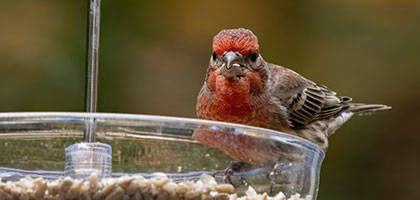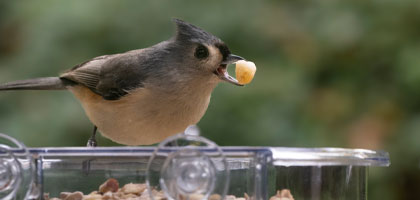Bird enthusiasts know the joy of attracting feathered friends to their gardens. One surefire way to do this is by offering mealworms as bird food.
Mealworms are a protein-rich food source that many bird species find irresistible. From bluebirds to robins, a variety of birds are drawn to mealworm feeders.
But how do you set up a mealworm feeder? And which birds are most likely to visit?
In this article, we'll explore the top birds that love mealworms and provide tips for using a mealworm feeder effectively. Let's dive in.
What Are Mealworms?
Mealworms are the larvae stage of the mealworm beetle, a species of darkling beetle. They offer a nutritious and tasty treat for many bird species.
Rich in protein, mealworms are excellent for birds' energy and growth. Available in both live and dried forms, they can be easily added to any bird feeding routine.
The Nutritional Benefits of Mealworms for Birds
Mealworms are a powerhouse of nutrition for birds, packed with essential proteins and amino acids. This makes them an excellent source of energy, especially during breeding and migration seasons.
Besides protein, mealworms also provide essential fats and fibers that are beneficial for overall bird health. As a supplement to a balanced diet, they support the well-being and vitality of many bird species.
Top Birds Attracted to Mealworms
Many birds flock to mealworms due to their tasty and nutritious nature. Bluebirds are among the most frequent visitors. These vibrant birds find mealworms irresistible, making them easy to attract with a well-stocked feeder.
Chickadees are small yet enthusiastic about mealworms. Their playful antics can bring life to any backyard as they dart to and from the feeder. With their friendly nature, they often become regular visitors.
Robins, though famous for devouring earthworms, also enjoy mealworms. During the breeding season, mealworms are especially favored as an energy-rich bird food. They actively scavenge for mealworms both on the ground and in feeders.
Wrens, known for their boundless energy, find mealworms to suit their high metabolism. These tiny birds can be spotted hopping around feeders, eagerly snapping up mealworms for a quick snack.
Woodpeckers, including the Downy and Hairy species, relish the chance to feast on mealworms. These mealworms act as a valuable supplement to their diet, especially when insects are scarce.
Nuthatches, with their agile movements, are yet another bird species with an affinity for mealworms. They often carry mealworms back to their nests, providing nourishment for their young ones.
How to Set Up a Mealworm Feeder
Setting up a mealworm feeder is a simple process that can bring delightful bird visitors. Choose a suitable feeder, such as a tray or bowl feeder. Place it in a visible and accessible spot in your garden, away from predators.
Make sure the feeder is easy for birds to approach. Position it near shrubs or trees to offer birds a safe retreat. This environment encourages more visits. Regularly check your feeder and replenish mealworms to keep the birds interested.
Live vs. Dried Mealworms: Which is Better?
Choosing between live and dried mealworms can influence how many birds visit your feeder. Live mealworms are generally more appealing because they mimic natural prey behavior.
However, dried mealworms offer convenience and a longer shelf life. Birds may also enjoy dried mealworms when fresh ones aren't available. Try both options to see what works best for your local bird population.
Tips for Feeding Mealworms to Birds
Feeding mealworms to birds can enhance your backyard birdwatching experience. To attract a variety of species, it's essential to provide well-rounded nutrition alongside mealworms.
Here are some tips to ensure a successful feeding routine:
- Offer a balanced diet
- Provide fresh water
- Clean feeders regularly
Implementing these practices will attract more birds and support their health, creating an enjoyable viewing experience. Regularly maintain your feeding setup to prevent potential health issues for your feathered visitors.
Conclusion: Enhancing Your Birdwatching Experience
Providing mealworms can significantly boost your birdwatching adventure. These protein-rich snacks attract a variety of fascinating bird species to your garden.
Combining mealworms with other food sources and fresh water will create a welcoming environment for birds. Follow these tips to enjoy watching a diverse array of avian visitors.




